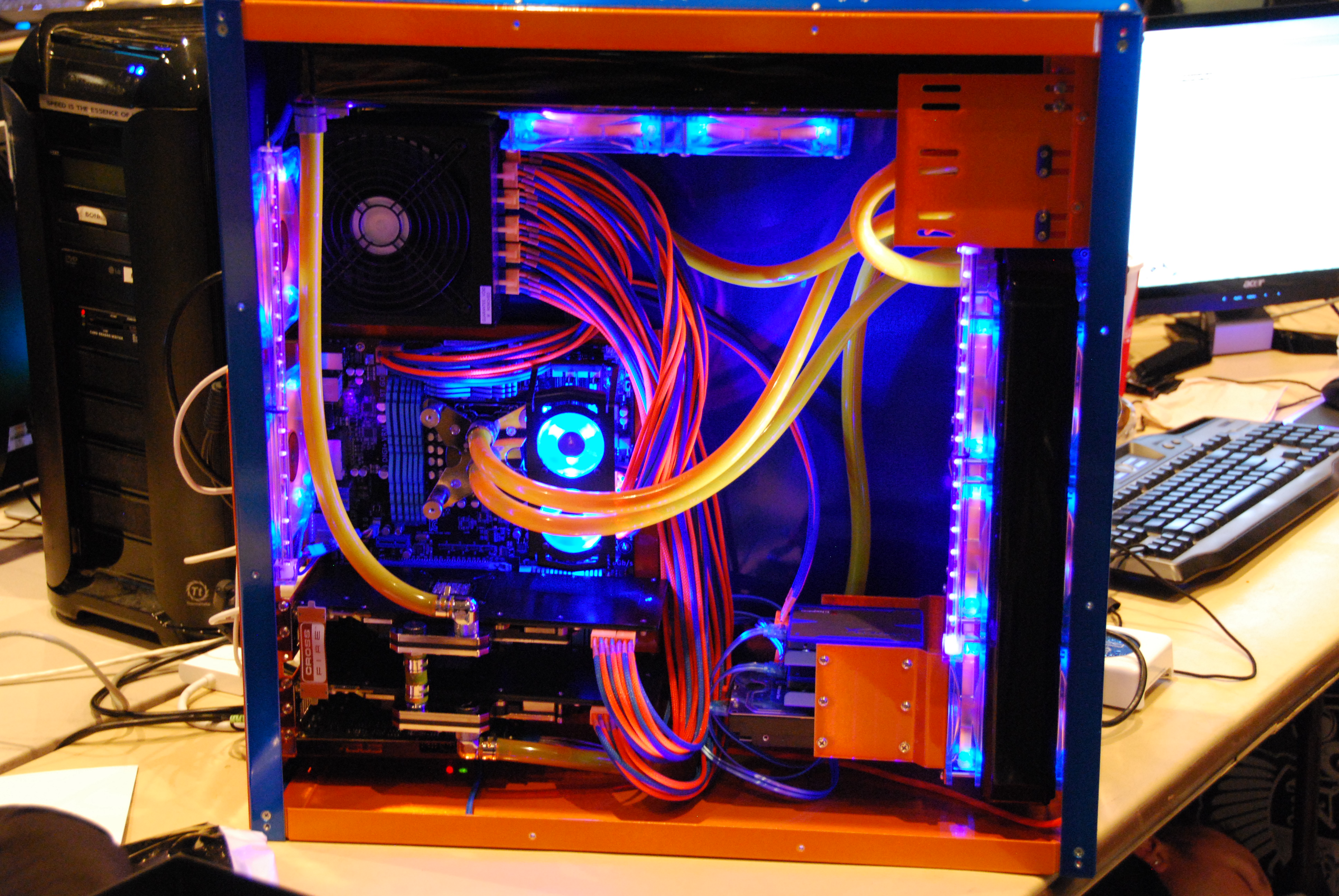How to build a computer – Phase 3: operating system

This is the third article of a series: how to build a computer. In case you missed them here are the first article and the second article. In this last article: the installation of the operating system.
Important: I take absolutely NO responsibility of what you do with your machine; use this tutorial as a guide and remember you can possibly cause data loss if you touch things carelessly.
Preparing
Now that you’ve (hopefully) built your computer it’s time to make it run. Now it’s time to install an operating system. Surely a computer can be powered up even without it, but it won’t do much alone. Before we start you will need:
- An operating computer.
- A physical support; which can be:
- USB pendrive
- CD or DVD.
- An image of the operating system you want to install.
When choosing a physical support you should be careful. In the past CD/DVDs where the first choice, today however most Linux distribution (or Windows itself) won’t fit in a regular CD, and some might not even fit a DVD. Older computer however, might not support boot from USB.
An image is literally a file (usually .iso) that contains the installer of the operating system. Now let’s take the first step.
Choosing an Operating System
For many it may seem trivial to choose, because they only know of one or two operating system to install on their computer, the truth however is that there are many out there, let’s take a look.
Windows
Windows is the most widespread Desktop operating system, with simplicity in mind it is aimed to normal users. The Windows family has three products (in chronological order) that dominate the desktop share: Windows 7, Windows 8/8.1, Windows 10. Remember Windows needs a license to operate and you can’t buy a license of a precedent version of Windows directly from Microsoft. For servers you can use the Windows Server family which is a product designed to run on servers.
Linux
If you opt for Linux you have my blessing. There are many distributions out there and choosing one might be difficult for a beginner. Generally I recommend Ubuntu or Linux Mint for desktop computers and beginner users. For a workstation or a more advanced users you could use Fedora, Debian or ArchLinux. As for servers/homelabs here’s where Linux shows its power: I highly recommend CentOS, you can however install Ubuntu or Debian which are also popular server operating systems.
Once you’ve chosen, you have to obtain the image of the operating system you want to install. For Linux you can simply navigate over the site of the distribution and hit download (if the software is free). Otherwise, for Windows, you have to obtain a copy in another way.
Creating the installation support
Now that you’ve got the image and have a physical support for installation you can go and create an installation support. Depending on the operating system you are using to create the support, you will have to choose between different programs. Today I’ll show you three.
If you are using Windows and want to create a Windows support go for: Windows USB/DVD Download Tool. Don’t hurry however, this tool is far from perfect, and you will have to download the images manually (the name is a lie).
If you are using Windows and want to create a Linux support go for Universal USB Installer. I’ve also written a detailed step by step guide in case you are interested.
In case you are on Linux and want to create a support either for Windows or Linux itself, I suggest you UNetbootin.
Now that you’ve got the installation support in your hands it’s time to boot it.
Booting from the support
The first choice you have to operate is whether to install the operating system in legacy mode or UEFI mode. This depends on whether the operating system you are going to install supports the UEFI mode. Popular operating systems like Windows or Ubuntu support UEFI mode, less known Linux distribution might not.
If you want to use legacy mode try entering the UEFI (feel free to put BIOS in place of UEFI if you are old-school) and look for an option called secure boot to disable it (or legacy mode to enable it). To enter the UEFI you have to press a button during the boot phase, it is usually ESC or F11 or Canc. It is also usually written in the very first screen you see after pressing the power button. If you can’t enter the UEFI, you have to enter it through Windows.
Now that you have set the mode you wish your installation to be, it’s time to enter the boot menu usually pressing F12 during the boot phase. Select the device (USB, CD/DVD) from the list and start the installation process.
Install
Now the hard part of the trick, the installation. I have multiple guides to install Linux Distributions like:
If you happen to have chosen Windows, the installation is straightforward and the Internet is a place full of guides. I also suggest my guide to disk, partitions and file systems.
- 2020 A year in review for Marksei.com - 30 December 2020
- Red Hat pulls the kill switch on CentOS - 16 December 2020
- OpenZFS 2.0 released: unified ZFS for Linux and BSD - 9 December 2020









Recent Comments